Udacity Developing Android Apps with Kotlin 레슨5 App Architecture (UI Layer) 요약
Lesson 5: App Architecture (UI Layer)
1. Architecting on the fly
2. Lesson Introduction
- Application Architecture
- ViewModel
- LiveData
- Data Binding
3. Exercise: Tour of the App
ktx를 쓰고 싶은 곳에서만 ktx가 구현된 파일을 import 할 수 있구나
4. Where the App Falls Short
5. What is Architecture
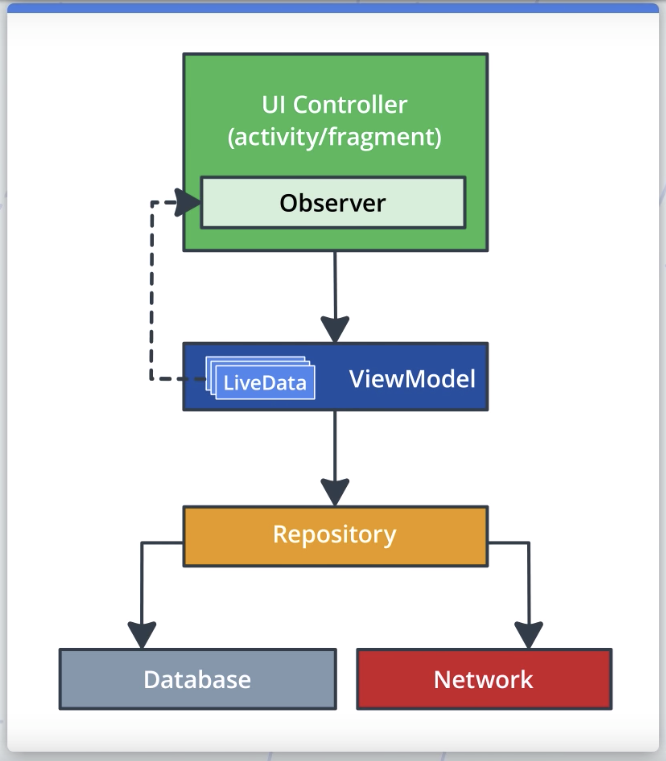
안드로이드 MVVM 패턴
- M : Repository + Data provider
- V : UI Controller
- VM : ViewModel(ViewModel 클래스의 기능은 Presenter의 기능과 다르지 않다)
UI Controller는 데이터를 표현하고, 사용자입력을 잡아내는 역할을 한다.
ViewModel은 UI 데이터를 담는다.
6. Our App Architecture
7. ViewModel
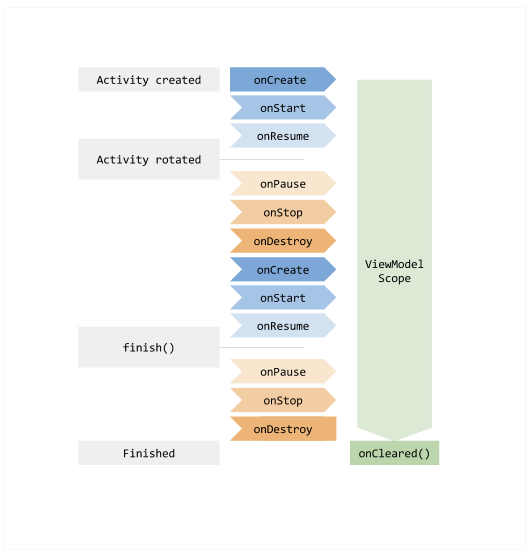
액티비티가 진짜 파괴될 때까지 유지된다.
그럼 메모리 관리를 위해 시스템이 프로세스를 죽일 때는 어떤 상황이 벌어지나?
다른 앱을 사용하고 있을 때 시스템에 의해 우리앱의 프로세스가 죽을 때가 있다. Recents 화면에서 우리앱을 눌누르면 이전에 보던 화면(Activity)와 함께 새로운 Backstack이 이전의 Backstack이랑 똑같게 만들어지는데, 프로세스가 죽으면서 메모리가 다 해제됐었기 때문에 동시에 ViewModel도 새로 만들어진다.
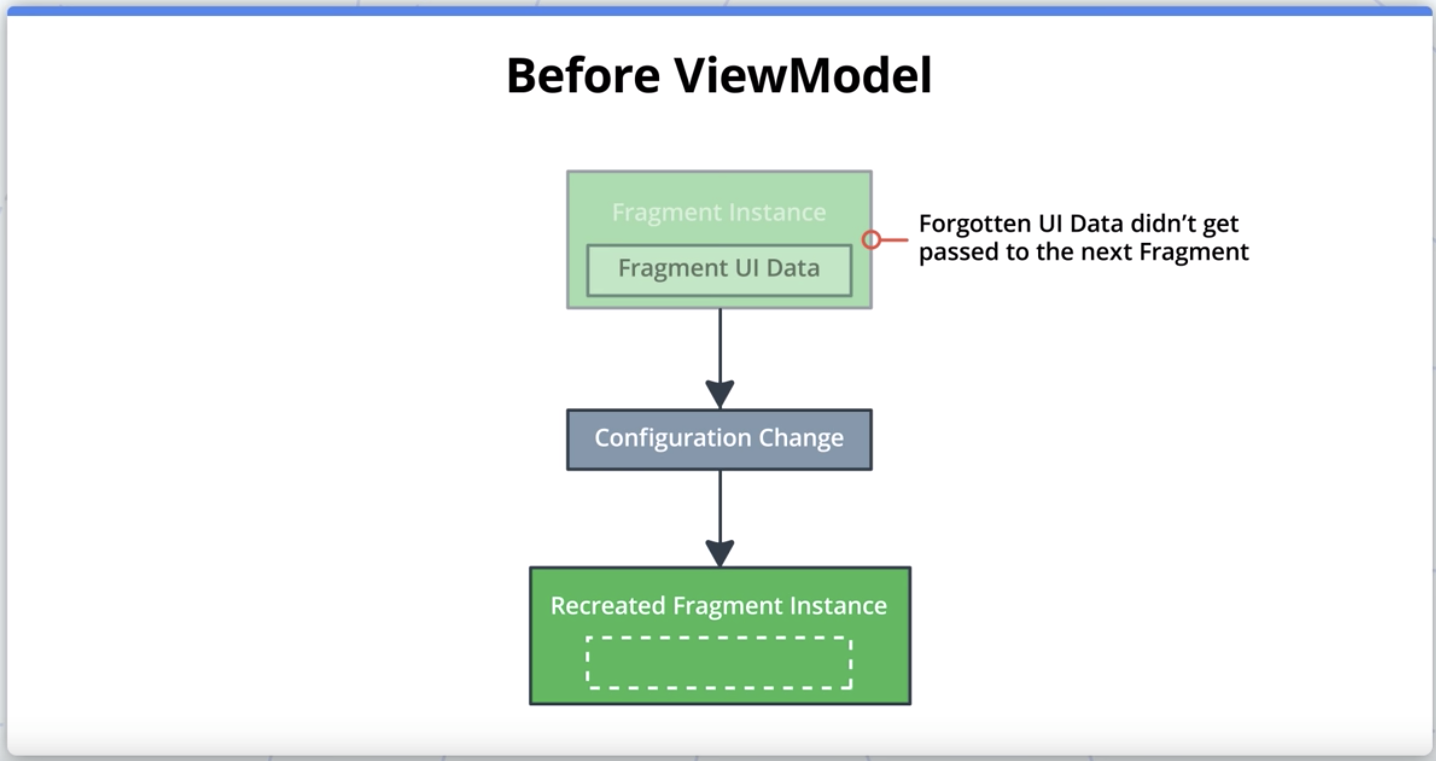
기기가 회전되면 Fragment가 다시 만들어지고, Fragment 안에 있던 데이터는 사라짐.
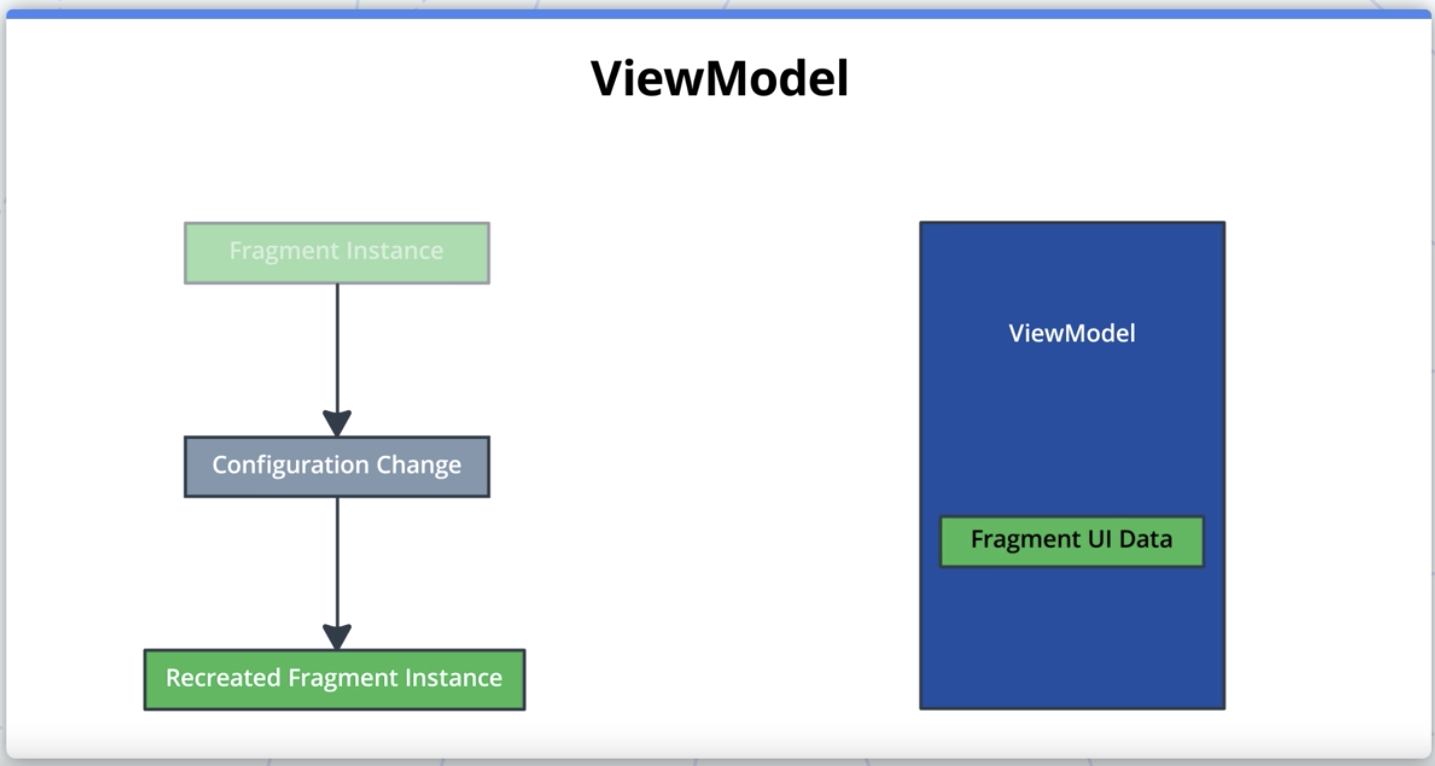
기기가 회전돼도 ViewModel은 다시 만들어지지 않기 때문에 ViewModel 안에 있던 데이터는 보존됨.
8. Exercise: Create the GameViewModel
9. What Belongs in the GameViewModel?
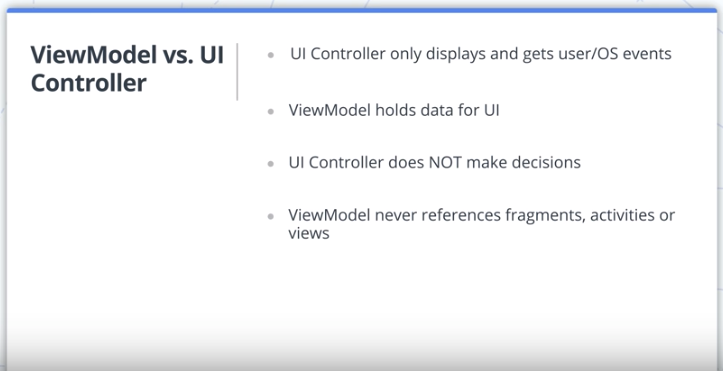
- 액티비티로부터 UI 데이터와 UI 데이터를 조작하는 메소드를 ViewModel로 옮긴다.
- 액티비티엔 Binding 객체와 UI 데이터를 표현하는 메소드만 남긴다.
10. Exercise: Populate the GameViewModel
11. The Benefits of a Good Architecture
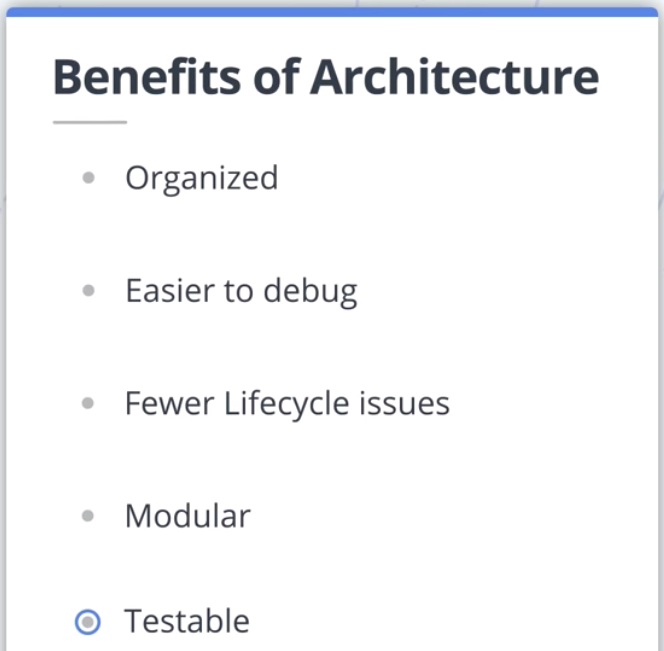
12. The power and Limits of ViewModel
메모리 관리를 위해 프로세스가 종료됐을 때를 대비하는 내용은 Lesson 6에서 자세히…
13. LiveData
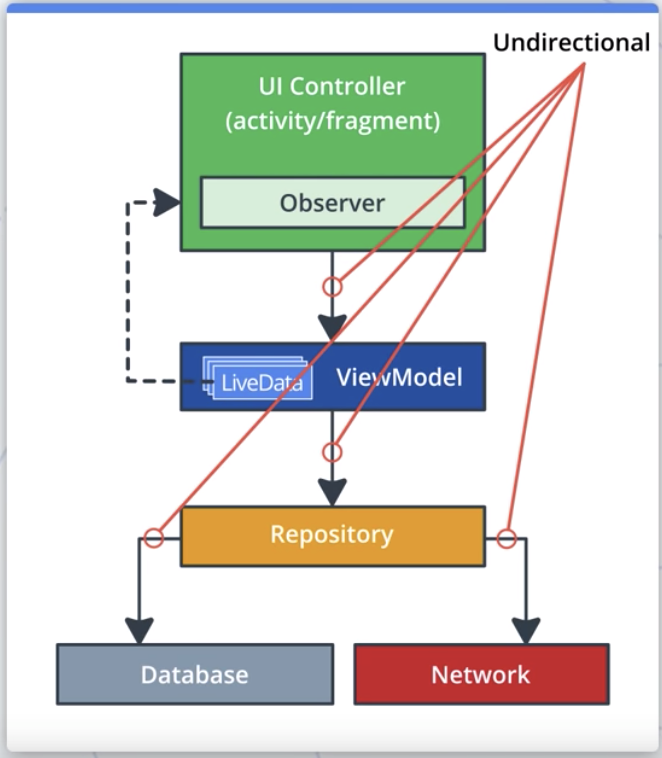
UI Controller에서만 ViewModel을 조작할 수 있는 Unidirectional은 ViewModel에서 UI 데이터가 변경됐을 때 UI Controller가 UI 데이터를 바로 갱신할 수 없게 만든다.

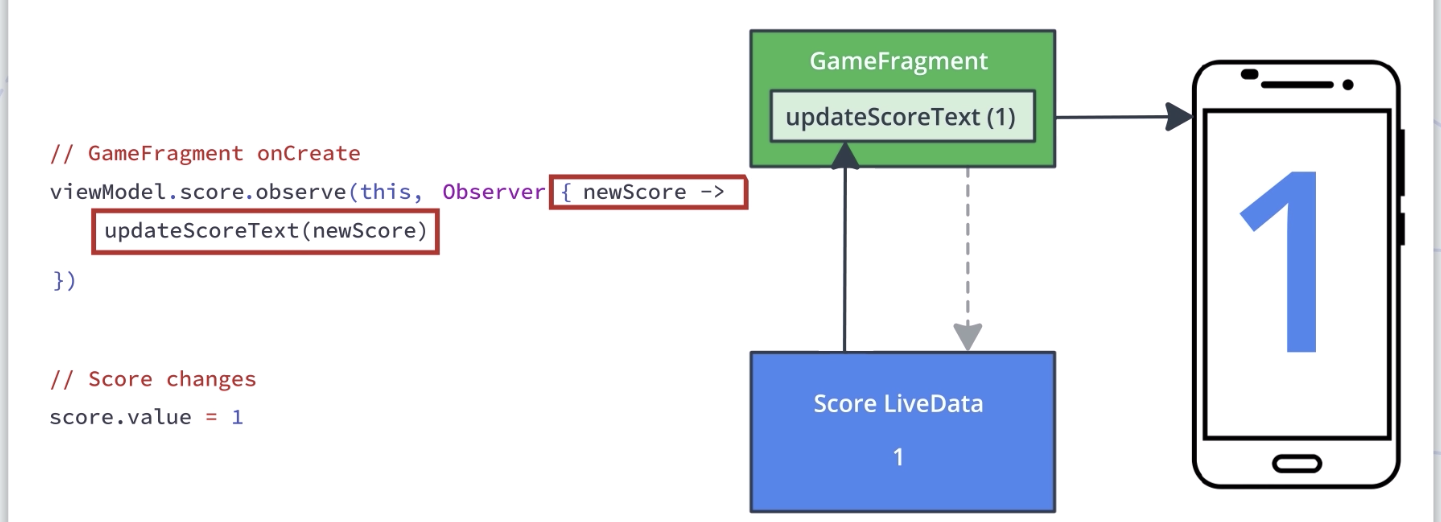
UI 데이터에 LiveData로 wrapping 시키면, ViewModel에서 UI Data가 변경됐을 때 UI Controller가 바로 알아채고 UI 표현을 갱신할 수 있다.
14. Exercise: Add LiveData to GameViewModel
fun onSkip() {
score.value = (score.value)?.minus(1) // value에 대입 시켜줘야 observe 이벤트가 발생함.
nextWord()
}
...
viewModel.score.observe(this, Observer { newScore ->
binding.scoreText.text = newScore.toString()
})
UI 갱신 코드가 여러 군데 있다가 한 곳으로 결집돼서 보기 좋아지고 에러 처리가 쉬워짐.
15. Lifecycle Awareness
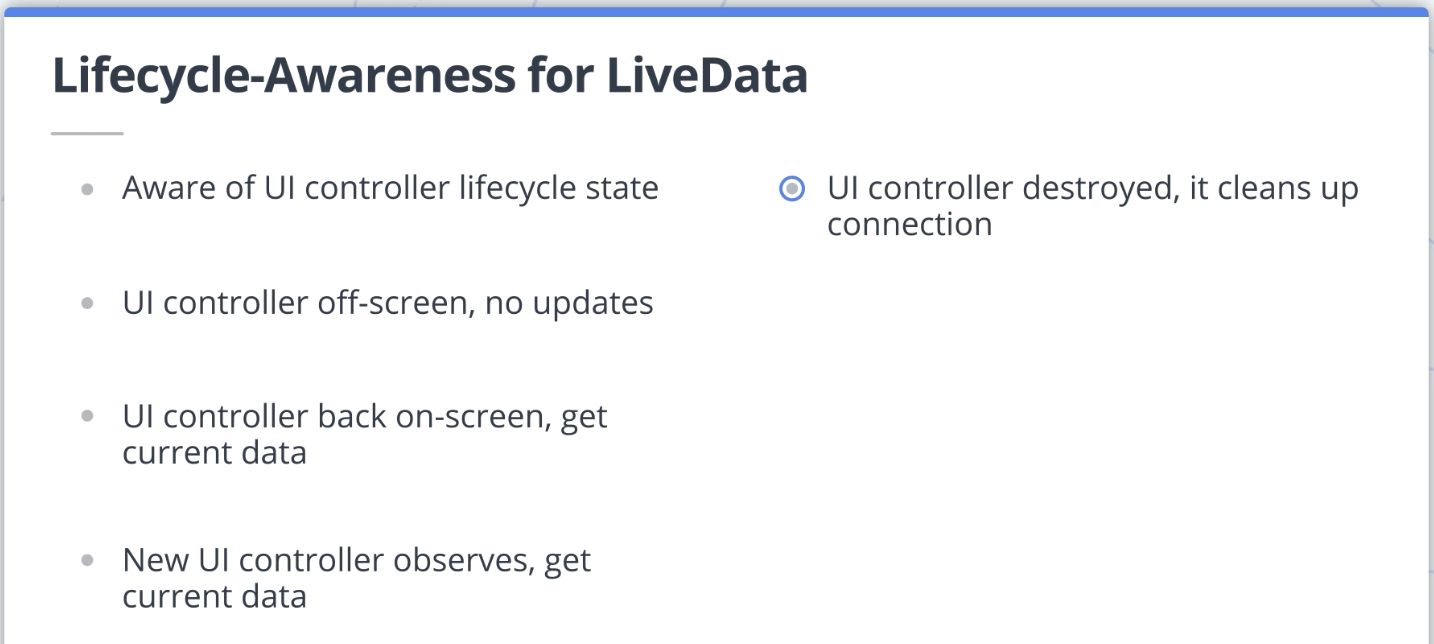
- off-screen 상태에서 LiveData의 값이 바뀌어도 observe 이벤트가 발생하지 않고, on-screen으로 돌아왔을 때 자동으로 현재 값을 담고 있는 observe 이벤트가 발생되기 때문에 상태 관리에 최적이다.
- UI Controller가 파괴되면 observe 커넥션은 자동으로 끊겨서 라이프사이클 문제에 대해 신경쓰지 않아도 된다.
16. Exercise: Add LiveData Encapsulation to GameViewModel
private var _score = MutableLiveData<Int>()
val score: LiveData<Int> // backing property를 써서 UI Controller에서는 데이터를 조작할 수 없게 만든다.
get() = _score
17. Event vs. State
이벤트는 한 번 발생하면 더 보존될 필요가 없는 것
ViewModel에서 이벤트 멤버변수는 event라는 prefix를 붙여서 이름짓는 듯
18. Exercise: Add End Game Event
viewModel.eventGameFinish.observe(this, Observer { isFinished ->
if (isFinished) {
Toast.makeToast(this.activity, "Game has finished", Toast.LENGTH_SHORT).show()
viewModel.onGameFinishComplete() // off-screen -> on-screen에 의해 토스트가 다시 호출되는 경우를 막기 위한 조치
}
})
19. Google Interview: Yigit Boyar
20. Adding a Timer
21. Exercise: Create the GameViewModel
DateUtils.formatElapsedTime(newTime) // 요 Util 좋네
22. Exercise: Add a ViewModelFactory
23. Exercise: Add ViewModel to Data Binding
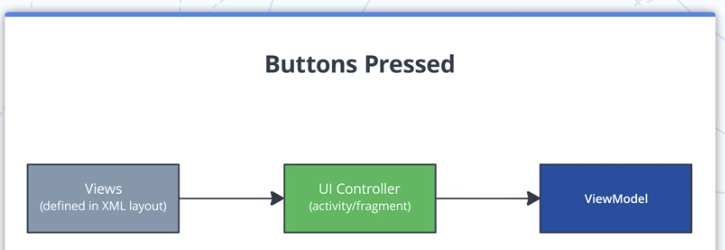
before Data binding
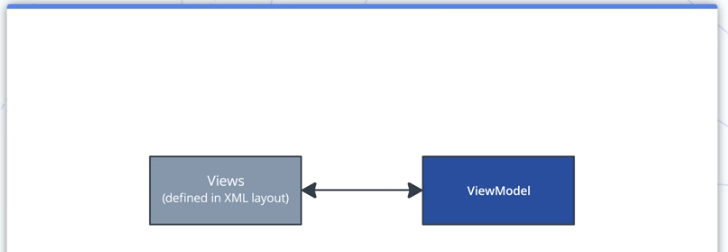
after Data binding
24. Exercise: Add LiveData Data Binding
binding.setLifecycleOwner(this) // LiveData를 xml layout에서 사용하기 위해
android:text="@{@string/quote_format(gameViewModel.word)}"
xml layout에서 데이터를 가공하려면 strings 리소스를 사용해야 하는데 많이 불편한 듯. 더 나은 방법이 없을까? 바로 다음 cencept. 25에서 해결방법을 소개한다.
25. Exercise: LiveData Map Transformation
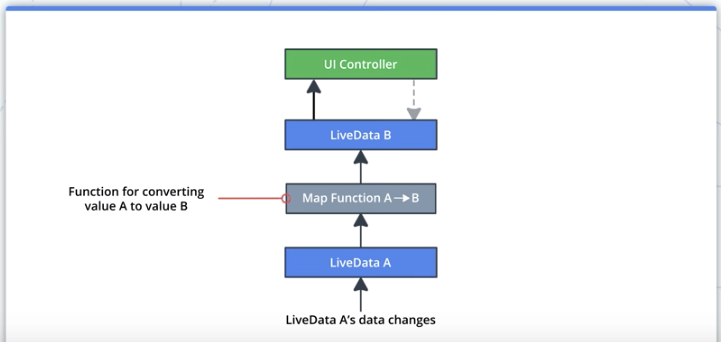
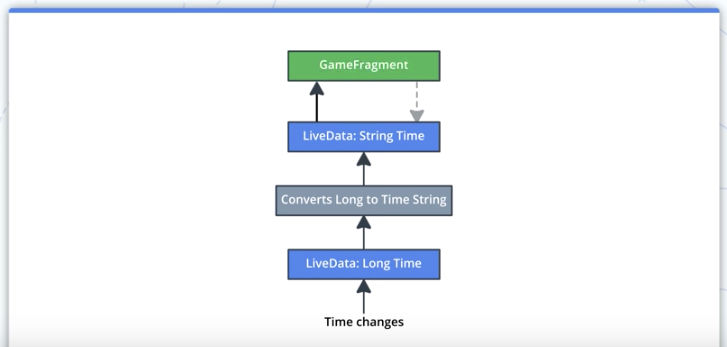
val currentTimeString = Transformations.map(currentTime) { time ->
DateUtils.formatElapsedTime(time)
}
android:text="@{gameViewModel.currentTimeString}"
26. Optional Exercise: Adding the Buzzer
27. Recap of Architecture and Lifecycles
마치면서
우리앱에선 모바일 위주라서 세로화면이 강제다. 화면전환에 대한 이슈해결을 위해 ViewModel을 사용하는 건 의미가 없다. 만약 태블릿도 대응하려면 ViewModel을 꼭 쓰면서 UI 디자인도 다시 고려해 할 것 같다. 앞에 이유 말고 ViewModel과 LiveData가 액티비티의 라이프사이클을 잘 알고 있기 때문에 사용하면 라이프사이클 문제에 대해 신경쓰지 않아도 되는 장점(필요할 때만 subscription에 이벤트가 발생, 자동 release 등)이 있어서 자주 쓰고 싶다. 또 ViewModel, LiveData, Data Binding을 함께 조합하면 UI Controller가 단순해지는 마법을 쓸 수 있어서 이런 구성으로도 쓰고 싶다.